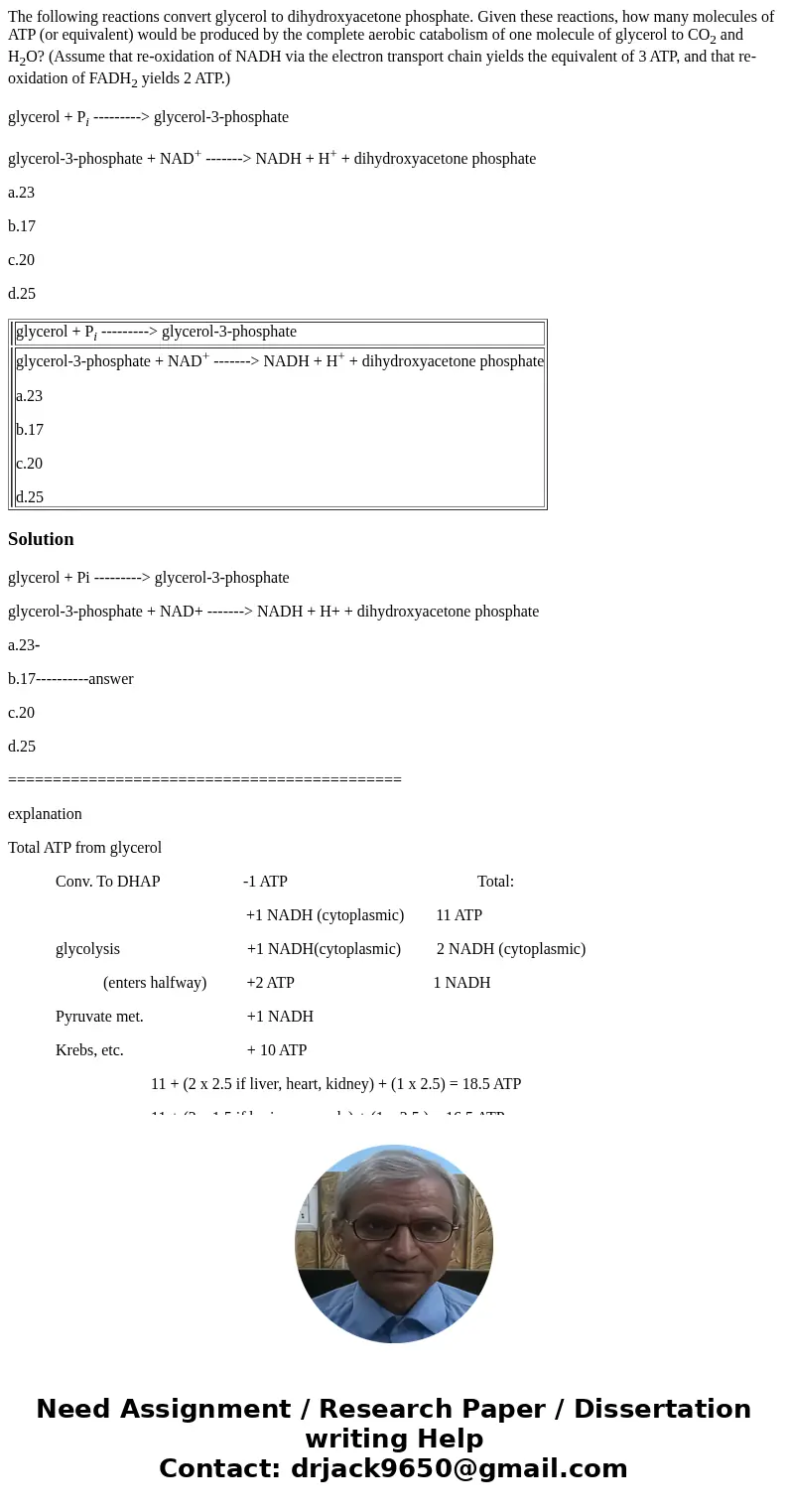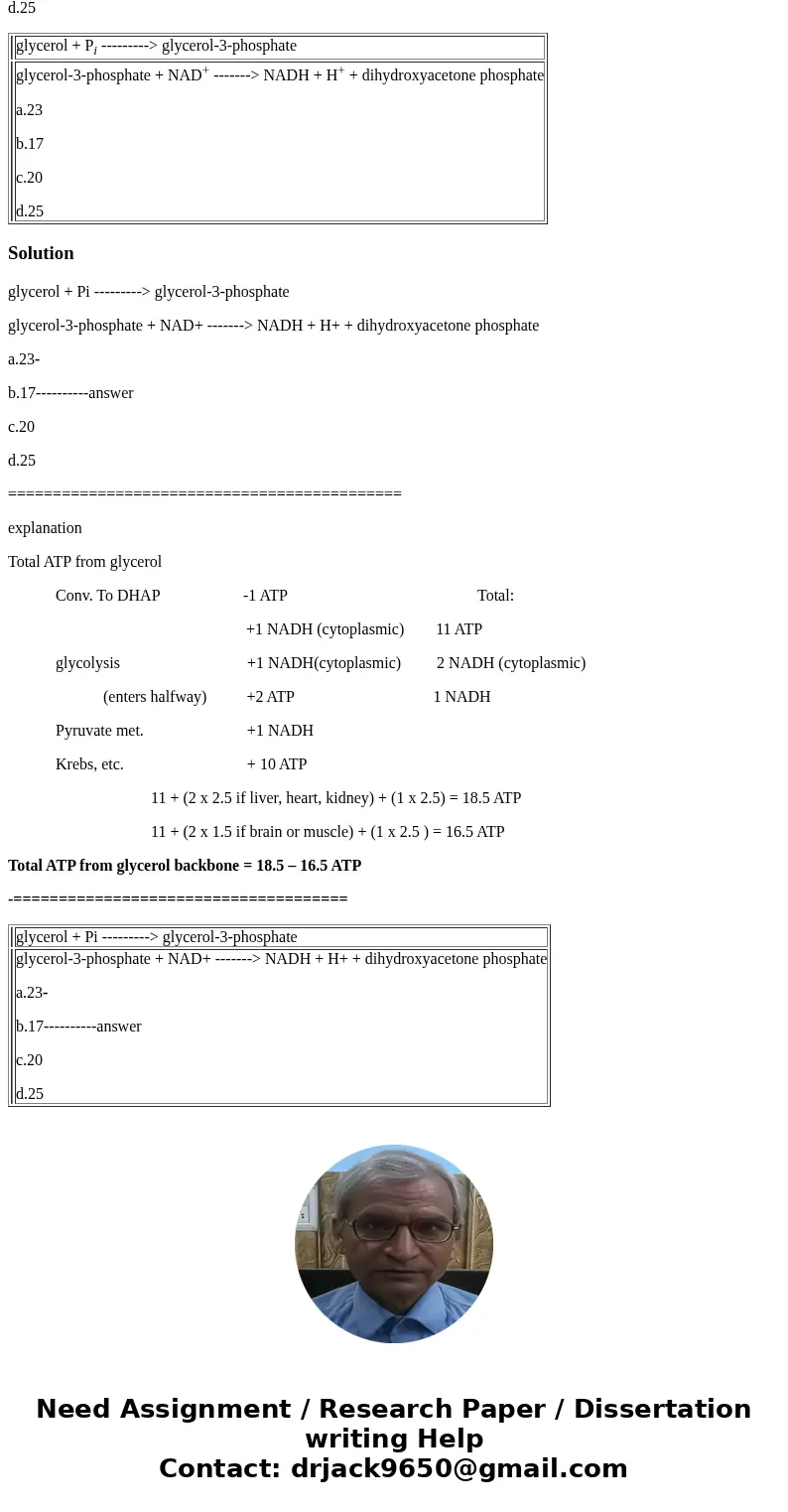The following reactions convert glycerol to dihydroxyacetone
The following reactions convert glycerol to dihydroxyacetone phosphate. Given these reactions, how many molecules of ATP (or equivalent) would be produced by the complete aerobic catabolism of one molecule of glycerol to CO2 and H2O? (Assume that re-oxidation of NADH via the electron transport chain yields the equivalent of 3 ATP, and that re-oxidation of FADH2 yields 2 ATP.)
glycerol + Pi ---------> glycerol-3-phosphate
glycerol-3-phosphate + NAD+ -------> NADH + H+ + dihydroxyacetone phosphate
a.23
b.17
c.20
d.25
| glycerol + Pi ---------> glycerol-3-phosphate | |
| glycerol-3-phosphate + NAD+ -------> NADH + H+ + dihydroxyacetone phosphate a.23 b.17 c.20 d.25 |
Solution
glycerol + Pi ---------> glycerol-3-phosphate
glycerol-3-phosphate + NAD+ -------> NADH + H+ + dihydroxyacetone phosphate
a.23-
b.17----------answer
c.20
d.25
============================================
explanation
Total ATP from glycerol
Conv. To DHAP -1 ATP Total:
+1 NADH (cytoplasmic) 11 ATP
glycolysis +1 NADH(cytoplasmic) 2 NADH (cytoplasmic)
(enters halfway) +2 ATP 1 NADH
Pyruvate met. +1 NADH
Krebs, etc. + 10 ATP
11 + (2 x 2.5 if liver, heart, kidney) + (1 x 2.5) = 18.5 ATP
11 + (2 x 1.5 if brain or muscle) + (1 x 2.5 ) = 16.5 ATP
Total ATP from glycerol backbone = 18.5 – 16.5 ATP
-=====================================
| glycerol + Pi ---------> glycerol-3-phosphate | |
| glycerol-3-phosphate + NAD+ -------> NADH + H+ + dihydroxyacetone phosphate a.23- b.17----------answer c.20 d.25 |


 Homework Sourse
Homework Sourse